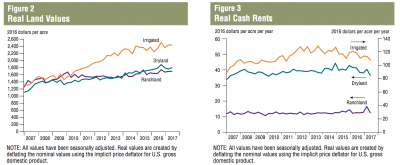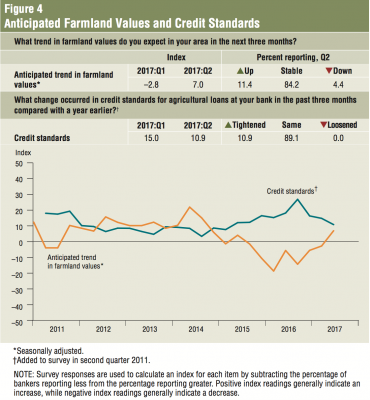Agriculture leaders in the United States House of Representatives are looking to provide at least an additional $10 billion in farmer aid to supplement the recently announced Farmer Bridge Assistance…
Dallas Fed Ag Credit Survey
Earlier this week, the Federal Reserve Bank of Dallas released the results of its 2017 Second Quarter Agricultural Credit Survey, which stated that, “Demand for agricultural loans overall decreased for a seventh consecutive quarter. Loan renewals and extensions continued to increase, albeit at a slower pace. The rate of loan repayment stabilized after declining for two years. Overall, the volume of non-real- estate farm loans was lower than a year ago, as was the volume of farm real estate loans. The volume of operating loans increased; all other loan categories’ volumes fell year-over-year this quarter.”

The Fed report indicated that, “Real district ranchland and dryland values increased this quarter, while irrigated cropland values were largely unchanged on balance. Dryland values rose 2.1 percent from last quarter, while ranchland values increased a slight 0.4 percent. According to bankers who responded in both this quarter and second quarter 2016, nominal district land values all increased year over year.”

This week’s report also added that:
After seven consecutive negative quarters, the anticipated trend in the farmland values index turned positive this quarter, suggesting respondents expect farmland values to trend up in the upcoming months.
“The credit standards index indicated continued tightening of standards.”

Selected comments in the credit survey from agricultural bankers in the Dallas Federal Reserve District included the following:
- Input prices are too high compared to grain prices—something has to change.
- Corn pollination is basically finished, with average yields expected on late corn and above average yields on some early corn.





